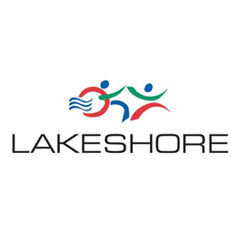|
Key Takeaways This blog is the first in a series from Lakeshore Foundation that will move through the five domains necessary to provide a comprehensive approach to ensuring that you are offering accessible fitness programs and that your fitness center is inclusive and welcoming to all individuals, including those with disabilities. Read on to discover how the built environment can be the key to inclusive and equitable fitness—beginning when clients arrive in your parking lot and continuing into every space in the facility. And, use the step-by-step process to evaluate your current environment and make improvements to design a space that is usable for all individuals. |
You watched the Olympics. Now it’s time to tune in to the Paralympics taking place in Paris at all the same venues, with Opening Ceremonies on August 28th. Speaking of the Paralympics, have you ever wondered what it would take to train a Paralympian, or anyone with a disability for that matter? The facility, the equipment, all the extra knowledge—could you do it? One in four adults in the U.S. has a disability, which means if you aren’t currently equipped and trained to serve people with a disability, you are missing out on reaching a large part of the population.
When it comes to access to health and wellness programs, the need is great. People with a disability are three times more likely to experience secondary health conditions, including diabetes, stroke and heart disease. Of course, people with these conditions can benefit greatly from regular physical activity. Unfortunately, people with disabilities are often not included in health and wellness programs, due to lack of access to the built environment or inadequate exercise program design.
The Built Environment
The first domain necessary to provide a comprehensive approach to accessibility focuses on the built environment, those structural features that are built into a facility or landscape.
Lack of access in the built environment is a guaranteed deal breaker for people with a disability. With a nod to the famous movie line and our focus on inclusion, “If you don’t build it accessibly, they can’t come.” If people with disability can’t get into your facility or can’t access places once they are inside, they simply won’t come.
The Americans with Disabilities Act (ADA) was passed more than 30 years ago, granting access to people with disabilities. However, the unfortunate truth is that access is still not guaranteed and fitness centers tend to be some of the guiltiest culprits when it comes to not doing enough to make their spaces usable for everyone.
The built environment of your fitness center is the first model of inclusion your members will encounter and it begins when customers enter your parking lot, including lighting, curb cuts, clear sidewalks, ramps and an automatic front door. Once inside, considerations include the height of the welcome desk, clear pathways, appropriate floor surfaces and proper signage. Be sure to view every area of the facility through the lens of accessibility, including the towel bins, locker rooms, bathroom stalls, aquatic space, space between machines, free weight area, aerobics room and everything in between.
As a fitness center, it is your responsibility to partner with the disability community and continually assess your environment to make the changes needed to ensure everyone is able to access your center. While the ADA exists as a basic standard, it addresses only the bare minimum in terms of need. The gold standard would be universal design, which ensures that environments are designed to be usable by all people, including moms with strollers, grandparents and people with disabilities, without the need for adaptation or specialized design.
Inclusion Solutions
- Take the following steps to assess and improve the accessibility of your facility:
- Do some research to find out what an accessible fitness center looks like and elements of universal design.
- Consider all different types of disability.
- Partner with a local disability organization or people with a disability.
- Assess your space using an accessibility checker (see below for options).
- Work with the disability community to make needed changes to your facility.
Resources
- Community Health Inclusion Index
- AIMFREE
- ADA Checklist
- Removing Barriers in Fitness Spaces
- The United States Access Board Guide to Accessible Routes
- ADA Checklist for Exercise Equipment
- ADA Checklist for swimming pools
- How to Choose a Fitness Center
- How to Connect and Engage with Disability Advocates and Communities
- Accessibility and Inclusion Toolkit for YMCAs and Fitness Facilities
Check out this blog learn more about Lakeshore Foundation and Serving Clients with Disabilities.




 by
by 








